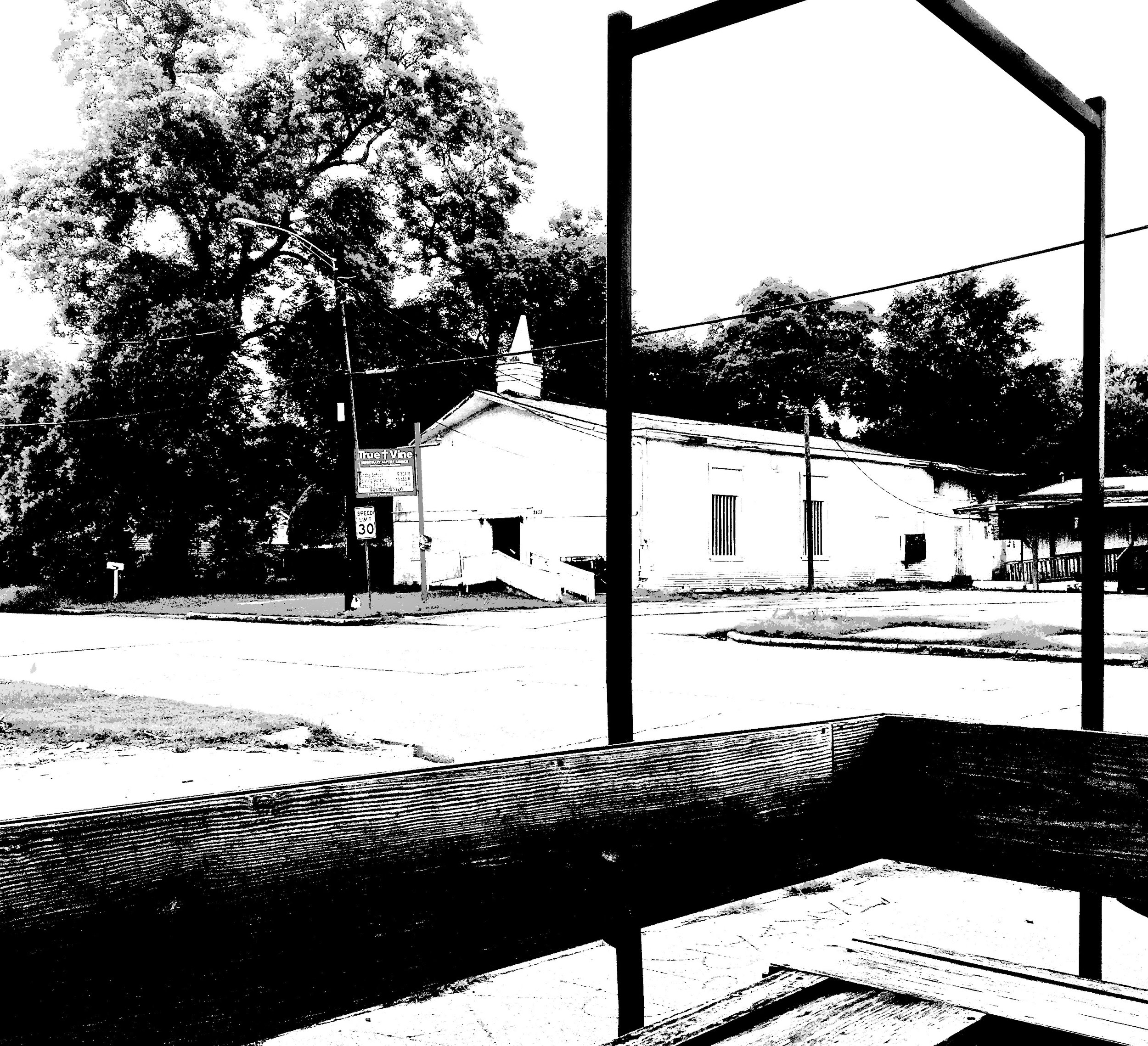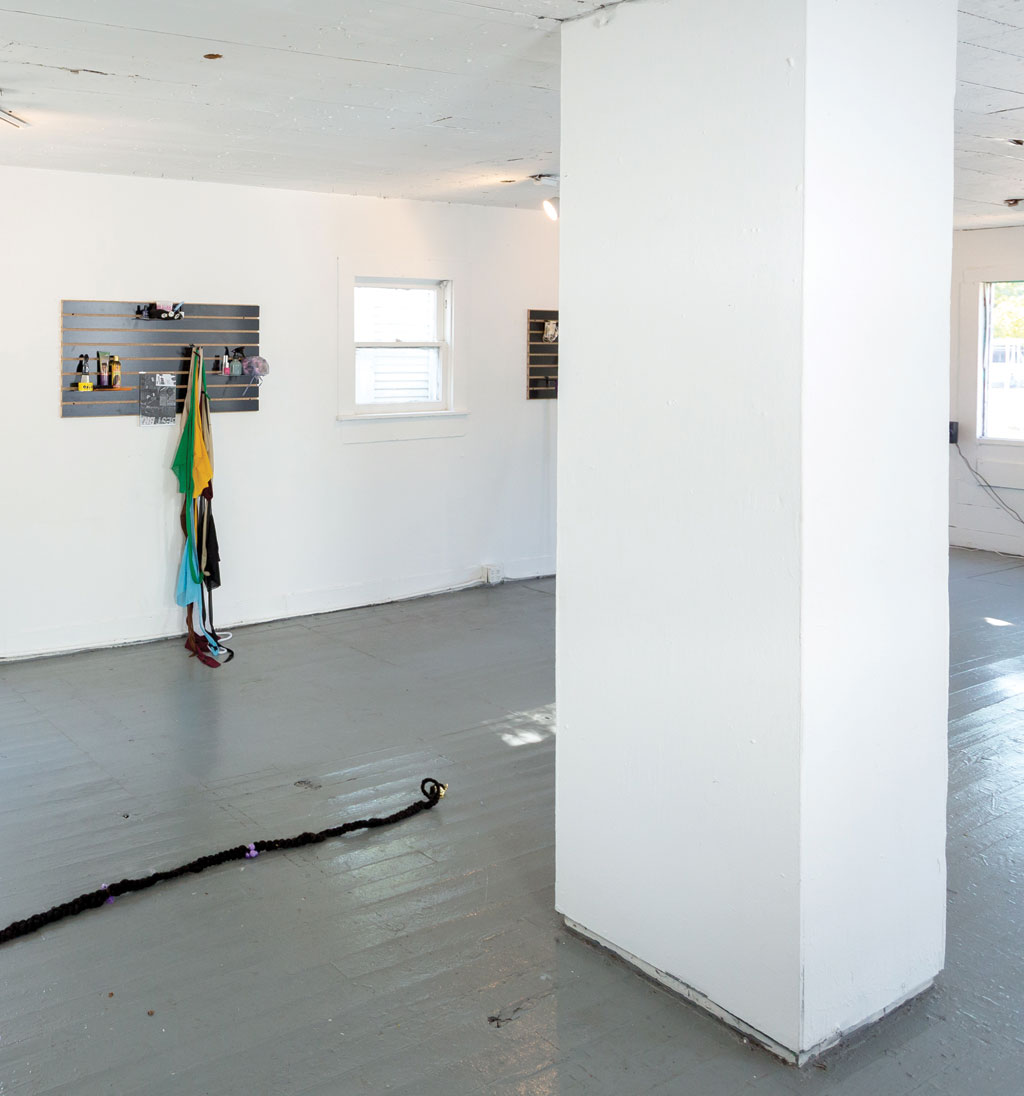


On my first day, I purposely asked the Lyft driver to drop me off in front of Project Row Houses. I felt compelled to start my first visit at the iconic shot gun houses. Maybe I was echoing other tourists too by romanticizing the history. But as I stared down the sidewalk towards the white peaks, the rain made me hesitate. Being familiar with Texas storms, my enthusiasm evolved to worries that a downpour would soak my laptop in the next five minutes. With disappointment, I forced myself to take an alternate route and walked down Division Street, which introduced me to the second-story buildings with porches. What did it divide?
It was then that I reflected on my previous visits to Houston and the Third Ward. While attending my MFA program and living in Austin from 2012 through 2015, I visited Houston once a semester. Initially, I came for the Vietnamese and Lebanese dishes. Eventually, I also visited for the free museums that displayed art by brown, black and queer folks. I sought affirmation for my decision to enter an MFA program that catered to white narratives. And Project Row Houses was one of two stops I made over such weekend trips. Never actually envisioned me here.
There, on two of the porches, I saw people conversing. One a young brown mother and her child, another a black woman under a porch talking to a black man standing in the rain. They nodded and smiled and two of the folks said hello and ignored my awkward jog and rolling baggage. The child continued without a glance, the rain continued to gain momentum, but no one seemed to care, the water was part of their life. What did they see that I didn’t?
I saw a community. Immediately, I felt like I didn’t belong. Who am I to be strolling in their yard with a purple suitcase and artist pride? I was a visitor, not a member of their community. I was the artist coming in to collect their stories and experiences. I was the visiting artist I snickered at in my city of Santa Ana, California, which fights gentrification against those within the city limits. I knew I had to be more observant, I knew I had a lot of research and reading to do. If I am going to ask questions, they would have to be new, they would have to be well-thought out. They would have to give the community a reason.
A hundred steps later, after passing a group of all black and brown folks bantering at the Gulf Gas Station, I was at the first home that would host my year-long fellowship. A shot gun house replica, similar to the images by John Biggers who I only knew in a book. That evening I got food delivered because I wasn’t quite sure where to eat in the area. I also started reading the text that would set the foundation for my project, How Racism Takes Place by George Lipsitz. Huh, a Jewish guy writing about African-American history, didn’t expect it, or maybe there’s more there? I started with the Project Row Houses chapter then read excerpts from other chapters that were referenced.
Although often people say these are called shotgun houses because a shotgun can be fired through the front door and it would go right out the backdoor without hitting a wall, it has also been traced that the phrase has been derived from the word “shogon.” In West Africa, “shogon” means “God’s House.”
I was in bed under a reading light. At the precise moment I read the proposed definition, a breeze in the room forced me to pop my head out of the book and scan from left to right. And that’s when I thought how life and death can travel in the few seconds it takes a bullet to go through a home. Imagine reading this at the same speed as the flying bullet. And what if we were to measure the fractals of each sense of time between here and there, between there and here, between slavery and freedom, between 1941 and 1945, between Black Panthers and urban developers, between tomorrow’s past and the 2030 future; each minute fraction between blinks and the spirits who called me to look beyond here and there.
Pause.
Did I lose you? Or do you see what I see?
Back to bullet speed.
Those small pieces of matter that make each second of time, those moments where white becomes brown and how an image of a shotgun evolves to God’s House; all has turned into a future where shades of skin and multiple languages are what make this space we have shaped into our image. Where color is freedom, where words like shogun, shaanti, barrio, kapitbahayan, cộng đồng and تi آل هة الب — all mean us, not them.
And there is where all of here begins…

